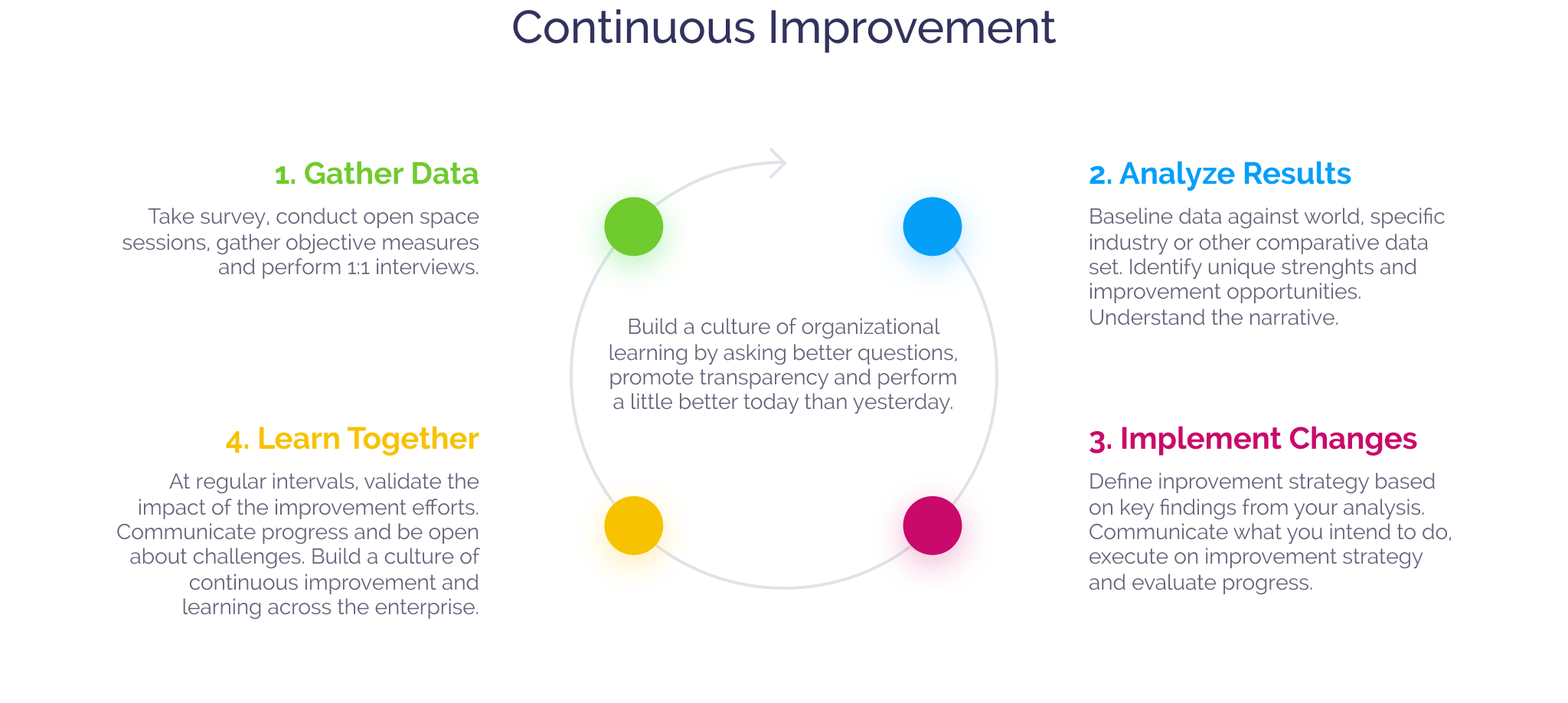Comparative DevOps
Comparative DevOps is an advanced DevOps assessment tool that will help you understand current capabilities across the entire release lifecycle and quickly identify opportunities for improvement.
Created by:

Identify strengths and opportunities. Improve faster
The analysis will ensure you are able to benchmark where you stand compared to others in the industry and ultimately enable you to establish a data-driven DevOps transformation strategy.
About Comparative DevOps
DevOps is an essential part of a broader enterprise continuous improvement strategy. Our Comparative DevOps assessment will enable you to identify strength and opportunities of your of infrastructure automation, continuous integration & continuous delivery and make it possible for you to improve faster, more reliably and efficiently. It will allow your DevOps teams to receive objective data on how you are performing relative to the whole world or specific industry which will lead to an effective investment decisions where it matters most.
Continuous Improvement
1. Gather Data
Take survey, conduct open space sessions, gather objective measures and perform 1:1 interviews.
2. Analyze Results
Baseline data against world, specific industry or other comparative data set. Identify unique strengths and improvement opportunities. Understand the narrative.
3. Implement Changes
Define inprovement strategy based on key findings from your analysis. Communicate what you intend to do, execute on improvement strategy and evaluate progress.
4. Learn Together
At regular intervals, validate the impact of the improvement efforts. Communicate progress and be open about challenges. Build a culture of continuous improvement and learning across the enterprise.

One Platform with Ultimate Flexibility
Comparative DevOps are divided into seven key dimensions that will ensure you have covered all aspects of your assessment: code maintainability, continuous integration, engineering environment, emergent design, continuous deployment, empowerment, and outcomes.
Gather and Provide Feedback at Each Step
Enable small, incremental changes that will allow teams to identify opportunities for improvements, try new ideas, take more risks, and succeed faster while having a clear vision as to how organizations should improve next.
Focus on What Matters the Most
Ensure that your DevOps are focused on business value by considering the customer feedback so that each next step adds meaningful features and functionality to your DevOps teams.
Advanced Research Made Simple
Use a proven approach to accelerate your DevOps maturity level and streamline current processes while limiting the time your team spends on planning a future DevOps strategy.
Sample Questions
Continuous Integration
Automated tests are regularly run at least once per day and are part of the standard workflow.
Flow-based Optimization
We can make large-scale changes to the design of our system without depending on others.
Code Maintainability
Our software is in a deployable state early in the lifecycle.
Emergent Design
We can make large-scale changes to the design of our system without the permission of somebody outside the team.
Empowerment and Commitment
We can decide which tools we use.
Engineering Environment
Teams develop and test against systems that behave like the production system.
Continuous Deployment
Every change that passes the automated tests is deployed to production automatically.
Outcomes
The team is producing higher quality products than before.
Continuous Integration
Our team never has code lock periods when no one can check in code or do pull requests due to merging conflicts.
Top Features
Benchmark performance against peers in your industry.
Target your IT investments where it brings the most impact.
Establish a data-driven continuous improvement strategy.
Works at all levels of the organization - insights at team, program and enterprise levels.